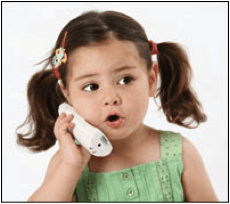For those of you who do not know, May is speech and hearing month! This is a very important topic in the world of autism spectrum disorder (ASD), as one of the core characteristics of a person with ASD is impairment with communication. This also affects another common characteristic – deficits in social interaction. Both of these characteristics are essential to the improved quality of life for all human beings, including your child with ASD.
According to the Simons Foundation Autism Research Initiative (SFARI), roughly 25% of individuals with a diagnosis of ASD speak few or no words. This creates a large problem, as living in a world without being able to communicate your wants/needs proves to be an enormous hurdle to overcome. This is where we start to see the different types of negative behavior in the home, school, and community. Your child most likely relies on you to meet most, if not all of his needs. Try and imagine being a child and not being able to speak or communicate your needs for just one whole day. Think about the types of things that you would do in order to meet your own needs, if you didn’t have the ability to ask others for help. Most likely, you would climb on counters if there was food on them, you would throw tantrums, out of frustration, or simply to attempt to get some form of attention. You might also resort to aggression. These are the challenges that your child faces without being taught how to communicate. Thankfully, there are many options through which your child can be taught to communicate that do not include vocal/verbal speech.
Augmentative and alternative communication (AAC) includes all forms of communication, other than oral speech, used for expression or the communication of wants and needs. There are two types of AAC systems – aided and unaided. Unaided communication systems include using a person’s body to communicate, such as gestures, sign language, or body language. Aided systems include the use of specialized equipment, in addition to the person’s body, to communicate. Examples of aided systems include the Picture Exchange Communication System (PECS), electronics that produce voice output, communication boards, and/or communication books. There are many professionals that can help introduce and teach your child to use these various forms of communication, including a speech language pathologist (SLP), assistive technology (AT) professional, or a Board Certified Behavior Analyst (BCBA). Often times, these professionals will collaborate collectively in order to ensure proper introduction and education of the AAC device that best suits your child’s needs.
For more information on AAC devices, please view the following links:
- AAC Institute
- International Society for Augmentative and Alternative Communication
- Rehabilitation Engineering and Assistive Technology Society of North America
- Rehabilitation Engineering Research Center on Communication Enhancement

